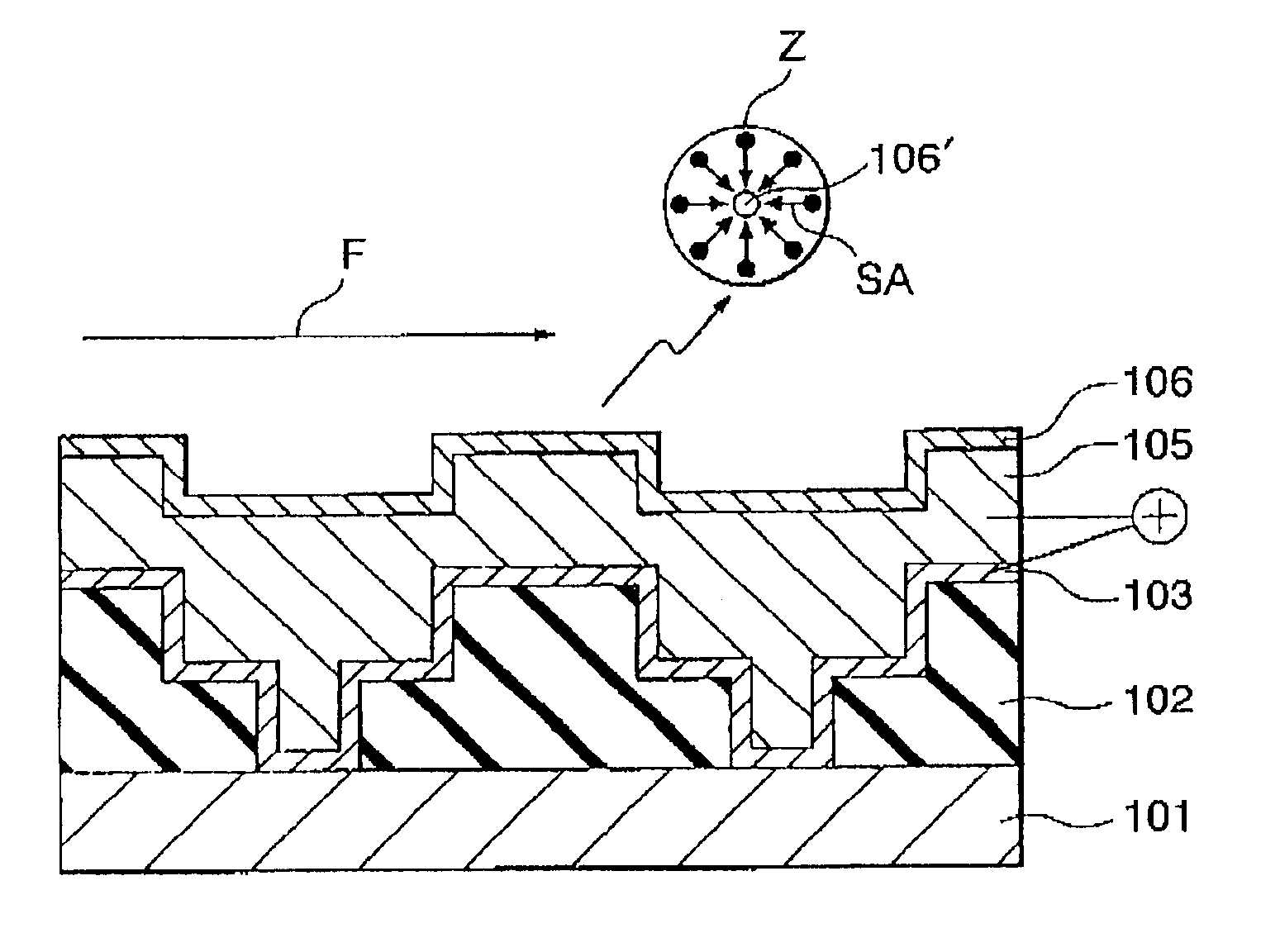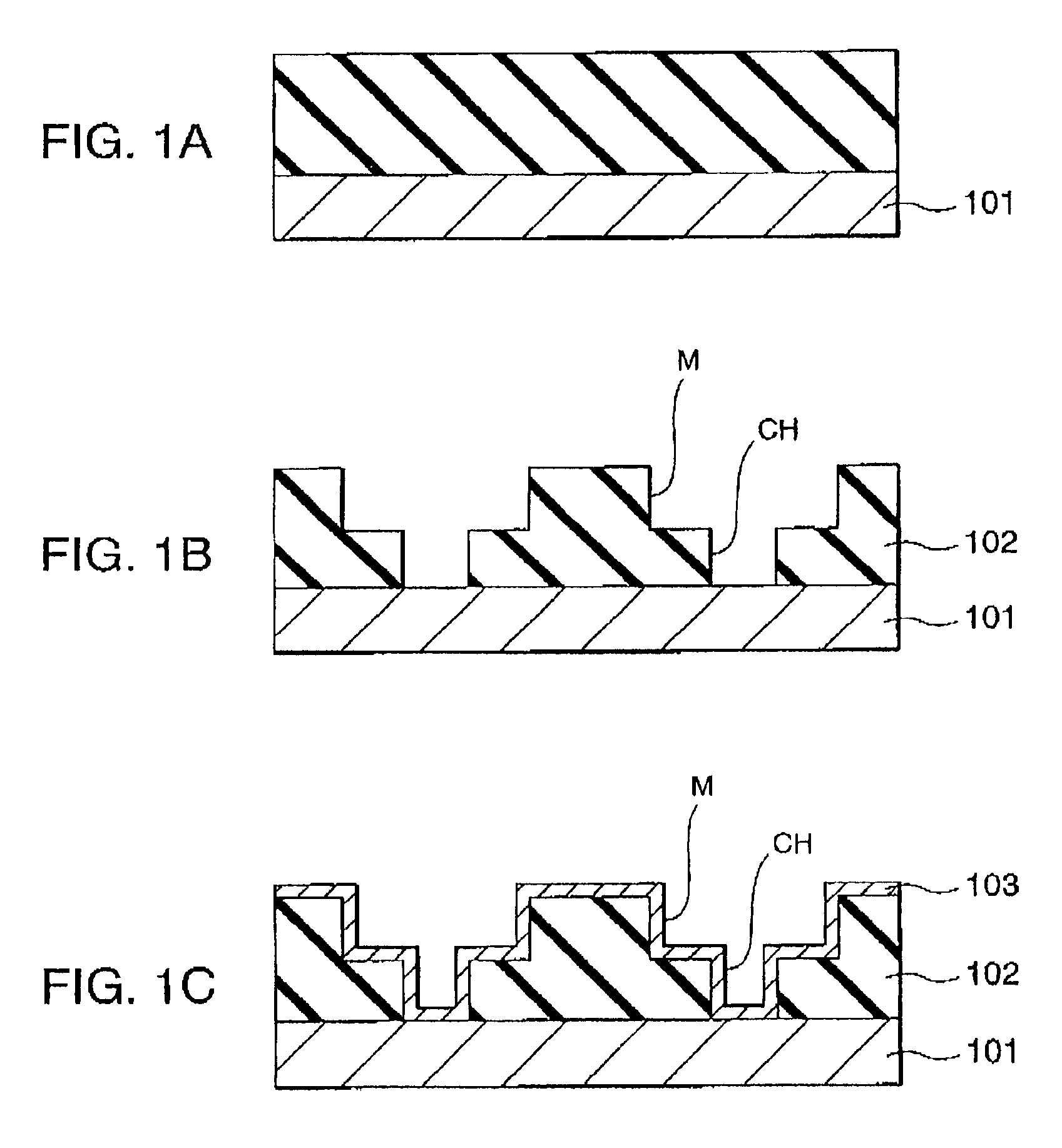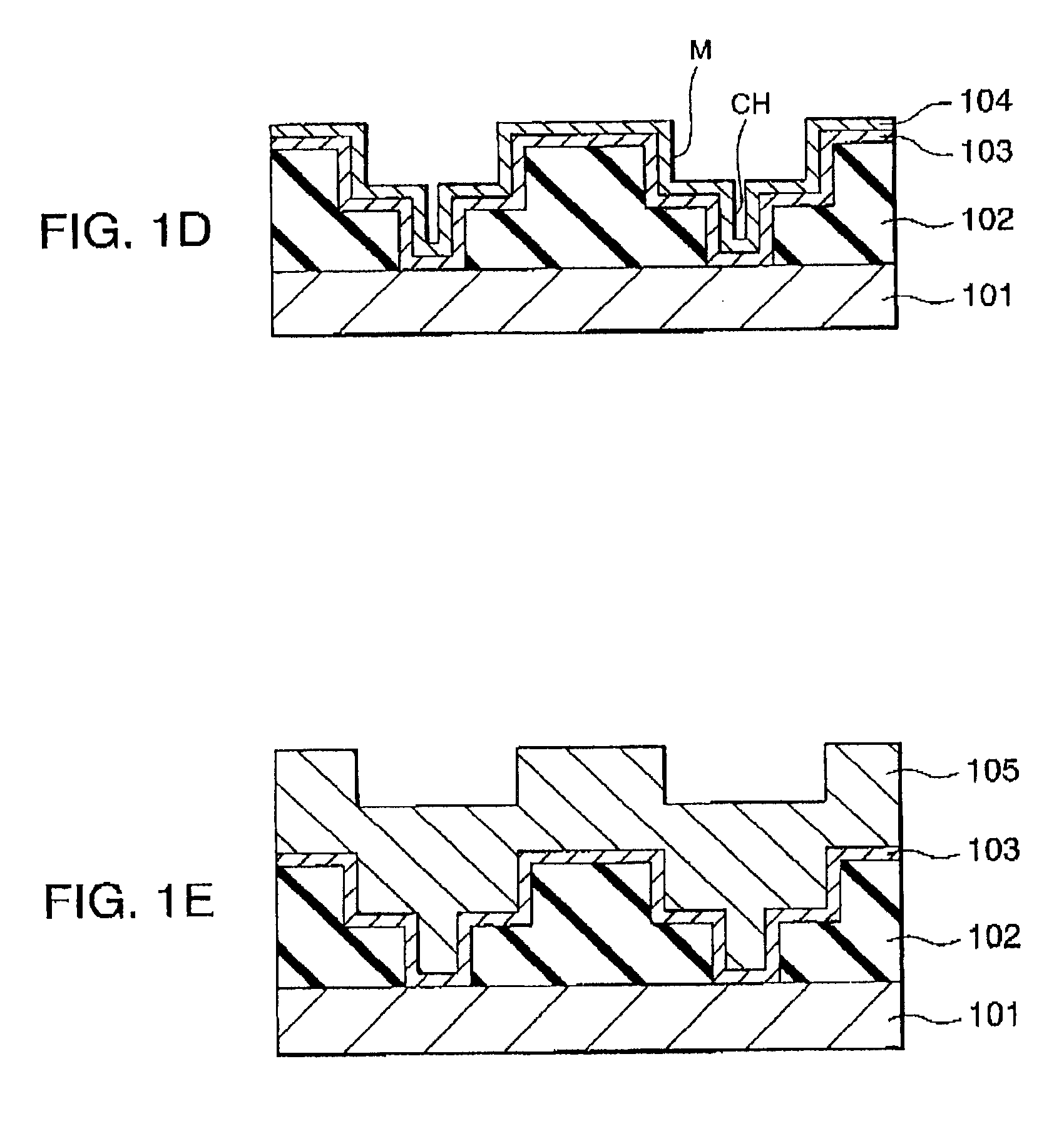Polishing method and polishing apparatus
- Summary
- Abstract
- Description
- Claims
- Application Information
AI Technical Summary
Benefits of technology
Problems solved by technology
Method used
Image
Examples
first embodiment
The first embodiment relates to application of the polishing method of the present invention to a process of formation of copper interconnections by a dual damascene process in a process of production of a semiconductor device.
First, as shown in FIG. 1A, for example an interlayer insulating film 102 made of for example silicon oxide is formed by low pressure chemical vapor deposition (CVD) on a silicon or other semiconductor substrate 101 on which a not illustrated impurity diffusion region is suitably formed by using for example tetraethyl orthosilicate (TEOS) as a reaction source.
Next, as shown in FIG. 1B, contact holes CH communicating with the impurity diffusion region of the semiconductor substrate 101 and interconnection grooves M are formed by well-known photolithography and etching. The depth of the interconnection use grooves M is for example about 800 nm.
Next, as shown in FIG. 1C, a barrier metal film 103 is formed on the surface of the interlayer insulating film 102 and i...
second embodiment
FIG. 3 is a schematic view of the configuration of a polishing apparatus used in the process of polishing a copper film of the above interconnection layer.
Namely, the polishing apparatus of the present embodiment includes a table 10 for carrying a wafer W to be polished (hereinafter, also referred to as “wafer”) that has a copper film on its surface, a securing means such as a vacuum chuck provided on the table 10, a controller 23, a control panel 24, a power supply 25, an ammeter 26, a cathode member E, an electrolytic bath tank T for storing the electrolytic solution EL, a jet pump P, a filter FT, and an electrolytic solution pipe PEL.
Note that, although not illustrated in the figure, the above polishing apparatus is installed in a clean room, and a loading / unloading port for loading and unloading a wafer cassette storing wafers to be polished in or out of the clean room is provided in the clean room. Further, a wafer conveyance robot for transferring the wafers between the wafer ...
third embodiment
FIG. 6 is a schematic view of the configuration of a polishing apparatus according to a third embodiment.
The polishing apparatus according to this embodiment is similar to the polishing apparatus according to the second embodiment, but the cathode member E is formed as a hollow cylindrical nozzle N. Electrolytic solution EL is jetted from a slit SL provided in the nozzle N.
With the above configuration, the wafer and the cathode member E do not necessarily have to be immersed in the electrolytic solution EL stored in the tank. It is sufficient that the electrolytic solution EL supplied from the slit SL of the nozzle N contact both of the wafer W and the cathode member E to enable current to be conducted between the two.
The rest of the configuration is substantially the same as that of the polishing apparatus of the second embodiment.
FIG. 7A is a sectional view in a plane vertical to the longitudinal direction of the hollow cylindrical nozzle N functioning as the cathode member, FIG. ...
PUM
| Property | Measurement | Unit |
|---|---|---|
| Shear stress | aaaaa | aaaaa |
Abstract
Description
Claims
Application Information
 Login to View More
Login to View More - R&D
- Intellectual Property
- Life Sciences
- Materials
- Tech Scout
- Unparalleled Data Quality
- Higher Quality Content
- 60% Fewer Hallucinations
Browse by: Latest US Patents, China's latest patents, Technical Efficacy Thesaurus, Application Domain, Technology Topic, Popular Technical Reports.
© 2025 PatSnap. All rights reserved.Legal|Privacy policy|Modern Slavery Act Transparency Statement|Sitemap|About US| Contact US: help@patsnap.com



